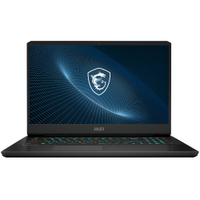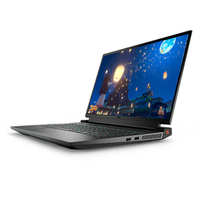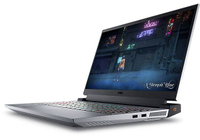The new GPUs coming to laptops early next year are one of the worst-kept secrets in the industry. Not because companies aren’t doing everything they can to hide it, but because the rigidly consistent calendar of the past few years makes it inevitable. But, before we get into the craze of analyzing speeds and feeds that big up the next generation of gaming laptops, I want to slow down for a second and suggest something that may be controversial — they may not be worth your money. In fact, for the best value for money, you should forego the next crop of systems and buy an RTX 30 Series laptop now while the prices are lower than ever.
Best RTX 30 Series laptop deals available right now
Gigabyte Aero 16 XE5 (RTX 3070 Ti): $2,449 $1,199 @ Newegg with code AFFIRM15PC (opens in new tab)MSI Vector GP66 (RTX 3080Ti): $2,599 $1,999 @ Newegg (opens in new tab)Dell G16 (RTX 3070): $1,899 $1,699 @ Dell (opens in new tab)
The biggest discounts come just before something new
While we don’t have any concrete information to share on new gaming laptops, trends set over many years indicate that we’ll see something new at the beginning of next year — most likely at CES 2023. It’s a tale as old as time: Nvidia and AMD launch new desktop GPUs in the fall, Intel and AMD sling some new desktop CPUs our way around the same time, then at the dawn of the new year, we see laptop companies refresh all their systems with the latest laptop versions. That means you’re going to see a ton of huge savings on outgoing models. Whether it’s companies working hard to empty their warehouses for more inventory, or trying to drum up some interest before bringing something new to the market, this is the right time to take advantage of the generosity.
The laptop GPU distortion field
You see gaming laptops brag about packing an RTX 3070, and chances are you will see laptops showing off an RTX 4080 and similar soon. But this is the moment where we get into the whole desktop vs. laptop GPU debate, because the differences are more finite. It’s not that the companies are being disingenuous — you’ll see GPUs labeled with the “laptop” moniker, but power and thermal constraints do hamper the differences somewhat. For example, let’s look back and compare the RTX 3080 with the RTX 2080 on both desktops and laptops. Getting technical, let’s dive into some user benchmarks. The desktop RTX 3080 is 49% faster in 3D speed than the 2080 Super, whereas the RTX 3080 laptop is 35% faster than the 2080 Super Max-Q. That’s still a notable increase for sure, but looking at it through the lens of a crossover comparison, the desktop RTX 3080 is 61% faster than the laptop version. The reasons a laptop GPU is weaker are well known. Power consumption needs to be kept low, and if you were to try and stuff a desktop GPU into a laptop, not only would it be a chunk, it would probably burst into flames the moment you tried to run a game. But this comes combined with reduced demand. Rather than trying to fulfill the demand of 4K (or even 8K) gaming like desktop GPUs, the best gaming laptops usually sport resolutions up to QHD (2560 x 1440), or for esports requirements, you can get an FHD panel with a far higher refresh rate. That almost balances out the demands, meaning you can usually get just as smooth of an experience on the smaller display of a gaming laptop as you do on the bigger, higher-resolution monitors of a desktop setup. So, while there will be some power gains in the laptop RTX 40 Series GPUs, and you should wait if you’re someone who likes to shop for the absolute bleeding edge, in the world of portable systems, those gains probably won’t be as significant as we’re seeing in desktops.
Optimizing games for long-term greatness
What does all this mean in real-world usage? Numbers are great, but that doesn’t take into account how games play and, most importantly, how well-optimized they are (and will be) for the hardware you can buy today. For example, my two favorite gaming laptops of the year have been the Asus TUF Gaming F15 and the Lenovo Legion 5i Pro (stay tuned for the review). The F15 may just have an RTX 3060 laptop GPU in there, but it’s more than capable of playing most of my must-play games (Cyberpunk 2077, Marvel’s Spider-Man, Forza Horizon 5) at mostly high settings while maintaining a solid 50-60 frames per second. The Legion 5i Pro I’m testing is significantly more powerful with an RTX 3070 Ti, and I’m able to play Spider-Man at ultra settings with all Ray Tracing options set to high at 60-70 fps. Cyberpunk was more of a challenge at around 50 fps average, but for a single-player shooter like that, I believe that’s acceptable. And then there’s supersampling. I’ve been blown away by Nvidia’s DLSS in laptops and AMD’s FSR on my Steam Deck in being able to smooth out and increase frame rates without any overly visible effects to detail. For my Asus TUF Gaming F15, I saw a 20% increase in average fps across all the games above with this turned on (make sure you turn sharpening off, though). Put simply, it breathes fresh air into systems even older than the ones I have and ensures you’ll be able to play AAA games for the next few years at impressively high settings. It somewhat eliminates that fear of needing to have the latest internals to make the most of power-hungry titles. It also supports the claim that you will get just as much mileage out of a current-gen laptop than if you were to wait for the next-gen model.
These gaming laptop deals are worth your money
So, with that in mind, let’s take a look at some of the best inflation-busting gaming laptop deals that fit this category. Not all deals are the same — retailers are picking up on this trend and we’re seeing some “deals” that don’t actually take that much off the price. But I’ve scoured the internet and picked a few that are worth your time.
Gaming laptop deals (US)
Gaming laptop deals (UK)






































